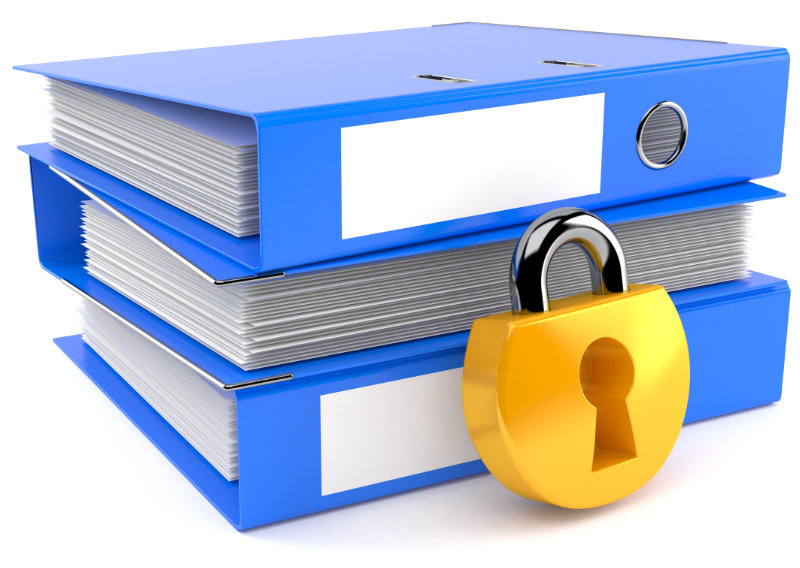Different organizations practice different forms of document management systems depending on their size in which small enterprises tend to store their documents on site in file tanks and folders that may become unregulated and difficult to sort, While large organizations tend to store their files digitally, either on the cloud or on the company's servers, In today's article, we will highlight the main elements of archiving secure documents, read on.

What is document archiving?
Digital document archiving is one form of electronic storage that is developed to help companies save time and space and financial resources that could have been spent instead on the use of file tanks, Digital documents are classified with a sign for easy location identification and retrieval in a few minutes And storing files in your organization's digital document management system can help improve efficiency as well as security of confidential documents.
Document archiving also in practice helps automate or simplify the life cycle stages of document management, such as document creation, editing, sharing, collaboration, archiving, etc.
The importance of effective document archiving
Document archiving is vital for information management, can give businesses greater control over their information processes, and as the business grows, it will create more data, the latter to be managed and closely monitored for proper use, and keeping tabs on this data can be a problem for companies that do not have a document archiving system.
It is difficult to locate documents that are not properly archived, secured and published if they are stored in a local environment - such as employees' laptop - and therefore other users will not have access to them, and therefore this will ultimately have a negative impact on the functionality and productivity of employees.
The advantages of document archiving
The advantages of document archiving, which is not only what we mentioned above, but also include the following benefits:
1. Preventing the loss of data and documents
Document archiving allows employees to retrieve backup information independently and quickly. Documents that are not digitized and archived forever may be lost. It is true that the chances of an employee accidentally deleting or misplacing the file are minimal, but this happens.
2. Legal Requirements
Archiving documents is also important for legal reasons, urging many companies to accidentally dispose of documents they should keep legally, Here an effective document archiving system will ensure adherence to the company's retention schedules notwithstanding each employee's knowledge of these tables, especially since data protection authorities may impose stricter penalties on companies They must therefore be made aware that ignoring such policies could lead to heavy fines or, in some cases, even prison sentences.
3. Increased security
Document archiving is also important for security reasons, especially as cyberattacks and data breaches become more frequent by securely archiving documents, Companies can track information and increase protection from unauthorized third parties Even the most cautious companies are now being targeted by very skilled hackers, Thus, the reliable off-site document archiving system will reduce these risks by warning senior staff when files are lost.
How does document security work?
When trying to secure your documents, this involves thinking about the security of paper and digital copies of documents. Here, team members must take steps that allow them to protect documents at all times. The security of documents begins to be implemented at the administrative level, including the development of regulatory policies and the preparation of devices to compel team members to follow specific rules and steps regarding document security.
For the majority of institutions, paper documents pose a greater security risk than digital documents, a team member may lose a hard copy of the document, or someone can carry it outside the building without anyone's knowledge, so maintaining document security through their digital archive is necessary.
What are the four main elements of secure document archiving?
The storage and archiving of documents refers to the practice of securing a document in the organization's document management system (DMS), where it involves the professional organization of files and documents so that they can be easily accessed on the cloud. To this end, these elements must be available for the archiving of secure documents, namely:
1. Use password protection
Using password protection on the most important files is a smart idea in document archiving. Adding password protection to secure documents is an easy process, when working using certain types of software commonly used to create documents, and without password protection for files found for example on a mobile device, the person taking the device can access sensitive files.
2. Encrypt your files
Encryption of files on the computer provides another layer of security that is easy to use for your team members, but effectively frustrates potential thieves. When you put encryption on the hard drive, the encryption software mixes the data in the file, making it impossible to read without the right password, after entering the password, the file contents return to normal.
3. Making digital copies
Having a digital backup of your documents is essential, invest in a good scanner, scan your important documents and turn them into digital files, scan all important documents, and save them in a cloud storage service.
Cloud storage in document archiving also allows files to be saved on remote servers accessible from the Internet, and most cloud-based business storage services also allow you to track who has accessed files and whether information has been shared.
4. Malware Protection and Redundancy
Both virus protection and redundancy protect data and ensure business continuity What it takes to archive secure documents is to have built-in features to protect your data, Your malware threat documents, moreover, multiple data repeaters can ensure that data can be recovered even if the active system is not available Your data needs to be stored with backups in more than one geographical replication area.
Conclusion:
Document archiving is a complex process to correct, and doing it wrong can risk leaving yourself vulnerable to security violations. In this aunt document archiving companies can manage your documents on your behalf, reduce the risk of errors and help improve the protection of your data.
Important Topics
Reference
1. << Electronic document & records management system to manage records like money>>, openaccessgovernment
2. << The importance of document storage in today’s digital age>>, citizen

Add New Comment